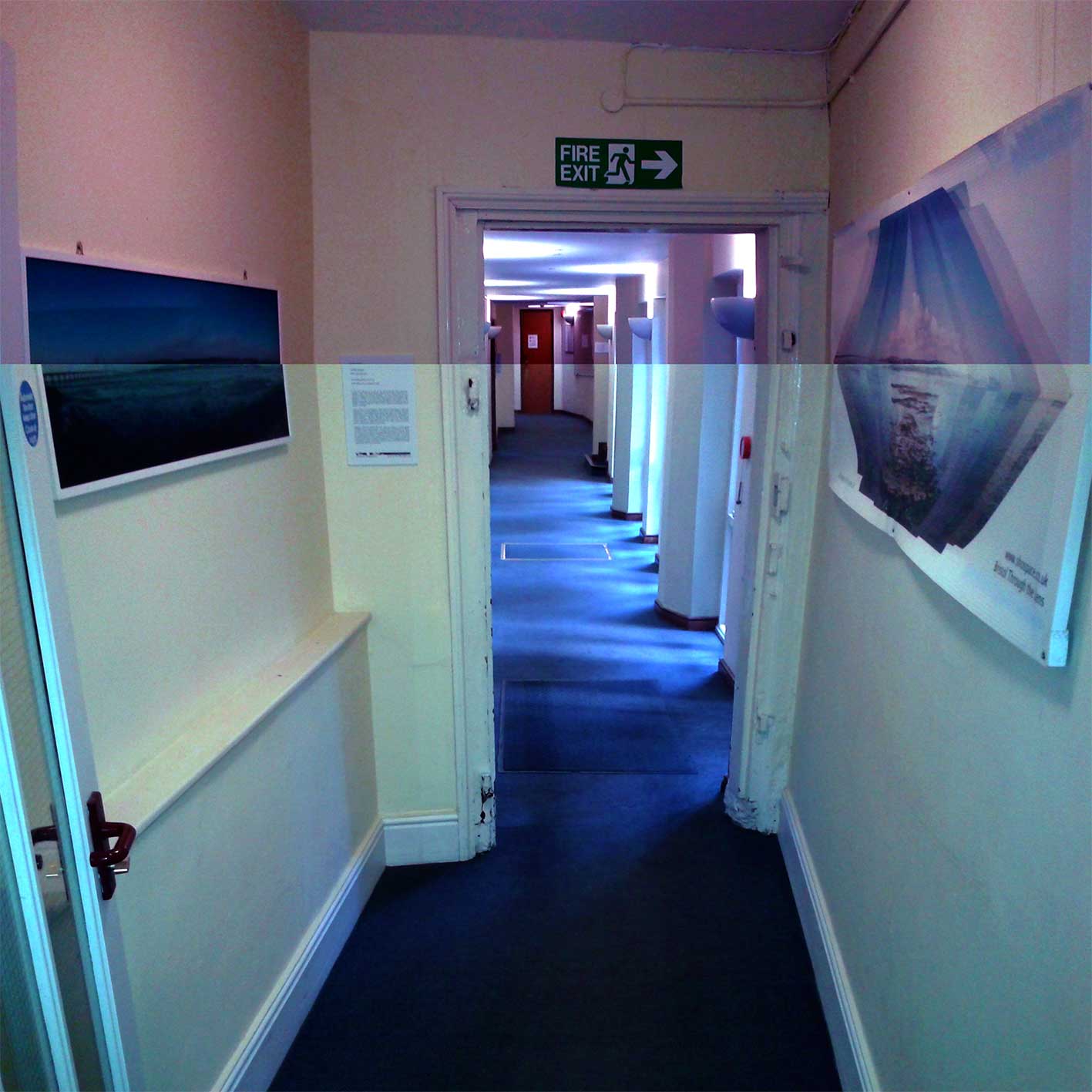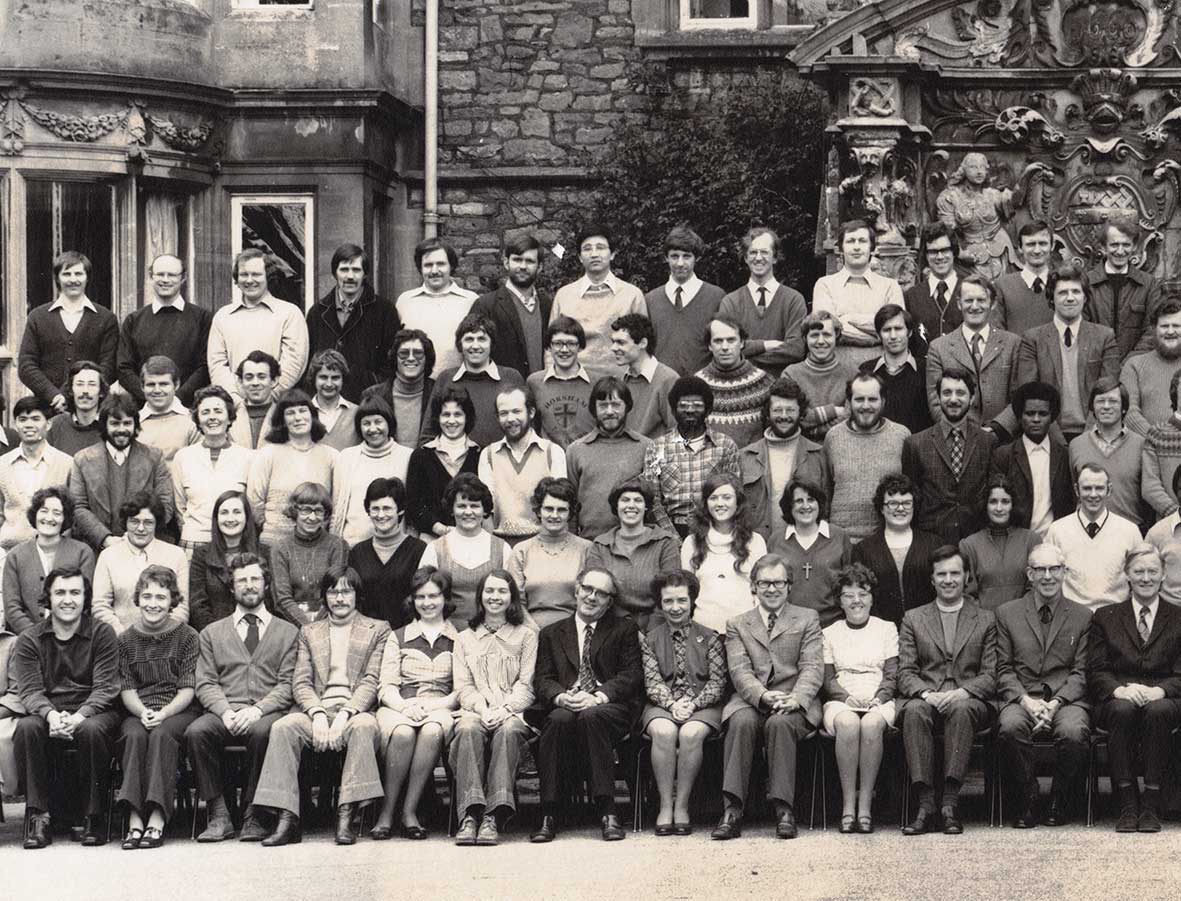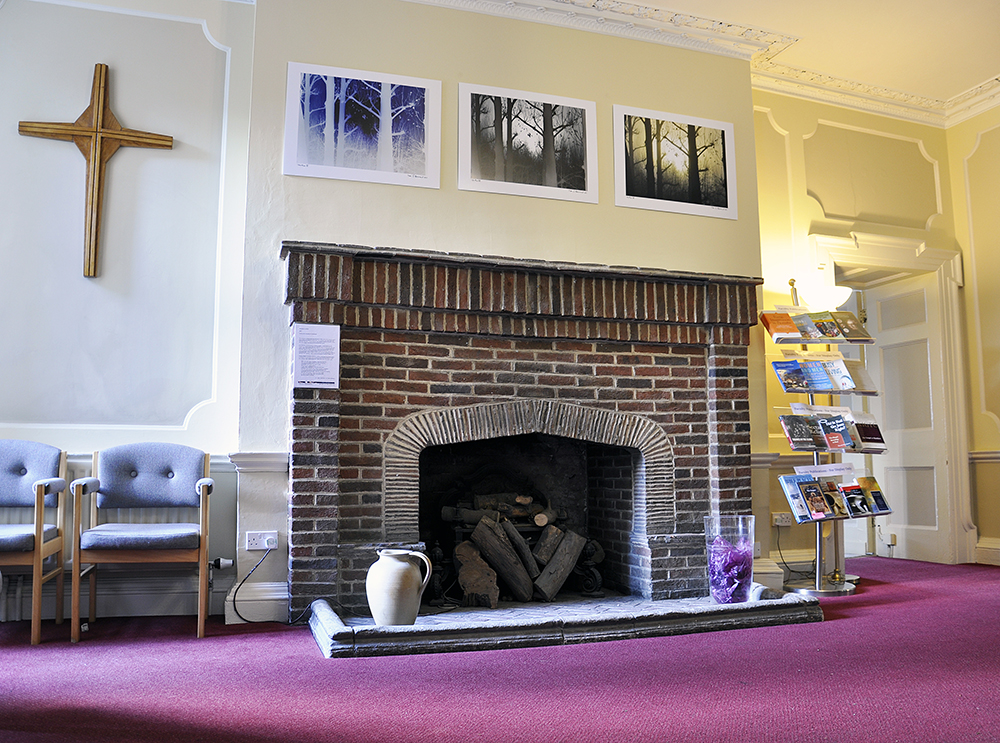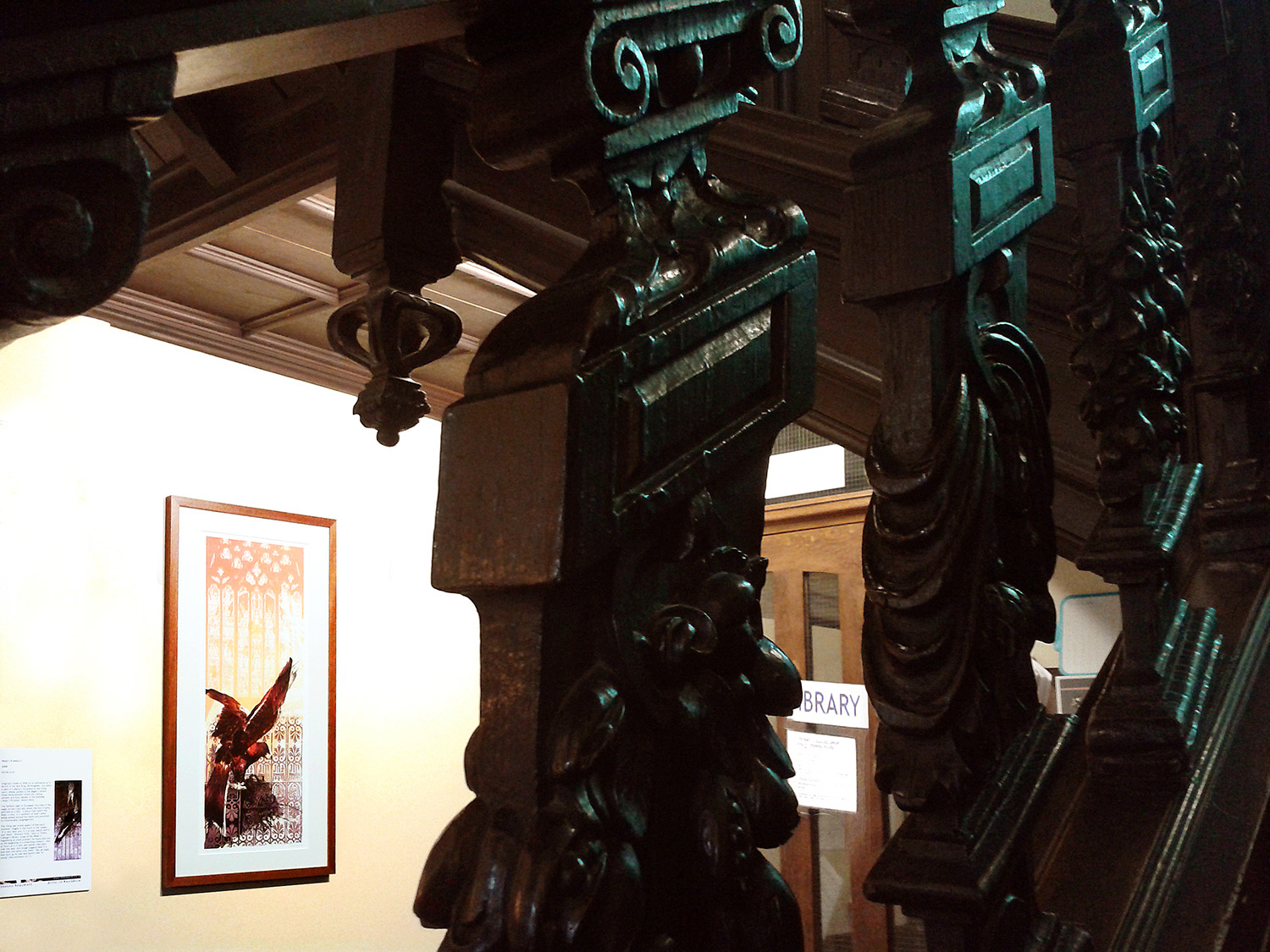1. Everyone’s going somewhere, so the work is given a chance to join in, and to be part of people’s journeys. This corridor is a central Trinity funnel: everyone passes through this space, from lectures to mealtimes to offices to common rooms. As such, the corridor is a special space for highlighting movement, transition, transformation, change. I’ve always felt this particular space is like a culvert – the stream of people passes in a tighter and more enclosed channel.
2. Corridors focus people’s sight lines on a horizontal plane and accentuate direction or end-points, so even though movement is emphasised, so is, paradoxically, the end of that line. At Trinity, people spend a significant amount of time asking questions about all the movement going on – about the point of the transitions and transformations. And it’s not just that there’s a metaphor in a physical corridor for spiritual change – it’s that geography really is spiritual, that people who come here and pass through here are working out their geography at bigger levels of parish placements and future directions.
3. What you lose in psychological framing and distance (‘Oh there’s an art work I’m looking at), you gain in holistic encounter (‘Something’s following me’). Here, my lenticular piece, The New Passage, does literally change as the viewer walks past – see here for the technique in its creation, when it was shown at the Royal Academy. Both my pieces show the tide changing in the Severn Estuary, and reference the parting of the Red Sea in Exodus – a life-changing crossing in so many ways. Corridors, ultimately, point up the multi-dimensional spaces in which transformation occurs by way of their limitations. That seems an apt reflection of God’s working too.
Header image (l-r): The New Passage, 2012, and The Parting of the Severn Sea, 2011 (installation view at Trinity College), by Sheona Beaumont.



